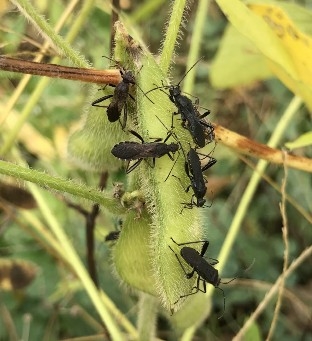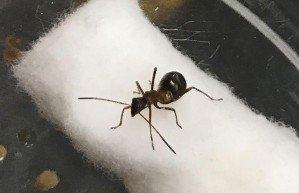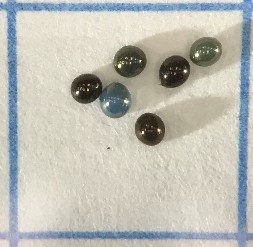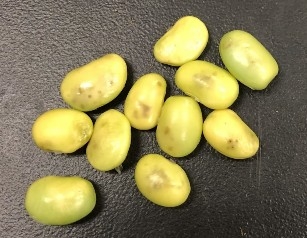Broad-Headed Bugs
ID
ENTO-457NP
Introduction
Broad-headed bugs (family: Alydidae) are a small family of insects with five species in Virginia. They feed on a wide variety of legumes, and are particularly notable for the ant-like appearance of their nymphs. Two species, Alydus eurinus and Alydus pilosulus, can gather in large numbers, causing damage to several different bean crops.

Description
Adults are about ½ inch long, slender and wasp-like, and black to dark brown in color. On the top of the abdomen, a red-orange spot is revealed when their wings open for flight. Nymphs resemble a large black ant in appearance and behavior.

Life Cycle
Broad-headed bugs spend winter in the egg stage, and nymphs hatch in early spring. They feed on wild legumes and progress through 5 instars, reaching adulthood in May-June. Adults do not lay egg masses. Rather, they lay single eggs indiscriminately on the ground. They have 2-3 overlapping generations in a year, and can be present in the field until as late as December.

Distribution
Alydus eurinus and Alydus pilosulus are present all throughout Virginia. They are commonly found in clover fields.
Damage to Crops
In mid to late summer, adults may move from wild legumes to cultivated ones. Females release an aggregation pheromone that draws in large numbers of broad-headed bugs to fields. The feeding from these aggregations can reduce yield and damage seeds, rendering them unmarketable. Damaged seeds exhibit inhibited development, dark marks, and reduced germination. This is especially detrimental to edamame because, unlike conventional soybean, cosmetic damage can be seen by the consumer.

References
Aldrich, J. R. (2000). Attractant Pheromone and Allomone from the Metathoracic Scent Gland of a Broad-Headed Bug (Hemiptera: Alydidae). The Canadian Entomologist, vol. 132, pp. 915-923.
Currin, B. (2021). "Alydus eurinus", Animal Diversity Web. Accessed July 08, 2021 at https://animaldiversity.org/accounts/Alydus_eurinus/
Yonke, T. & Medler, J. (1968). Biologies of Three Species of Alydus in Wisconsin. Annals of the Entomological Society of America, vol. 62, no. 2, pp. 526-531.
Underhill, G. W. (1943). Two Pests of Legumes: Alydus eurinus Say, and A. pilosulus Herrick- Schaeffer, J. Econ. Entomology, vol 36, no. 2, pp. 289-294.
Virginia Cooperative Extension materials are available for public use, reprint, or citation without further permission, provided the use includes credit to the author and to Virginia Cooperative Extension, Virginia Tech, and Virginia State University.
Virginia Cooperative Extension is a partnership of Virginia Tech, Virginia State University, the U.S. Department of Agriculture (USDA), and local governments, and is an equal opportunity employer. For the full non-discrimination statement, please visit ext.vt.edu/accessibility.
Publication Date
July 23, 2021



